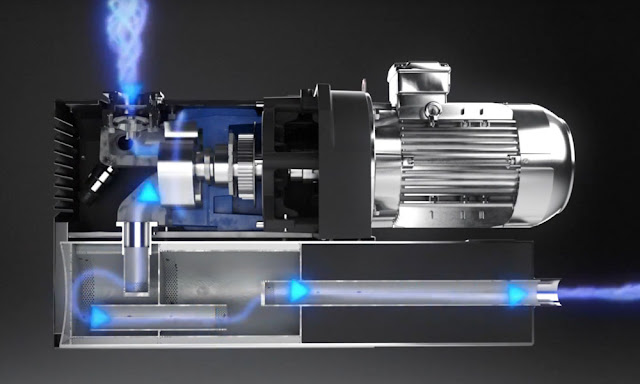Increasing Demand for Energy-Efficient Solutions in the Vacuum Pump Market Industry
The market industry is experiencing an increasing demand for energy-efficient vacuum pump solutions due to a growing emphasis on sustainability, cost reduction, and environmental regulations. Energy efficiency has become a crucial consideration for businesses across various sectors as they strive to minimize operational costs and reduce their carbon footprint. Vacuum pump manufacturers have responded to this demand by developing and offering innovative solutions that prioritize energy efficiency without compromising performance.
One key factor driving the demand
for energy-efficient vacuum pump solutions is the rising energy costs. Energy
consumption is a significant operating expense for industries that heavily rely
on vacuum pumps, such as manufacturing, chemical processing, and food
packaging. Energy-efficient vacuum pumps can significantly reduce energy
consumption by optimizing motor efficiency, minimizing air leakage, and
implementing advanced control systems. This not only leads to cost savings but
also helps companies meet their sustainability goals and comply with energy
efficiency regulations.
The global
vacuum pump market size
was valued at USD 6.07 million in 2022 and is anticipated to witness a compound
annual growth rate (CAGR) of 7.29% from 2022 to 2030.
Furthermore, environmental
consciousness has become a top priority for businesses and consumers alike. The
vacuum pump market industry is responding to this demand by developing solutions
that reduce greenhouse gas emissions and environmental impact. Energy-efficient
vacuum pumps require less power to operate, resulting in reduced carbon dioxide
emissions and a smaller ecological footprint. This aligns with the
sustainability objectives of many industries, including manufacturing, where
reducing environmental impact has become a critical consideration.
Additionally, energy-efficient
vacuum pump solutions offer improved operational performance and reliability.
These pumps are designed to optimize efficiency without compromising
functionality, ensuring consistent and reliable vacuum generation for
industrial processes. By incorporating advanced technologies such as variable
speed drives, intelligent controls, and leak detection systems, energy-efficient
vacuum pumps provide enhanced performance while minimizing energy wastage.
The increasing adoption of
energy-efficient vacuum pump solutions is also driven by government regulations
and incentives. Many countries have implemented energy efficiency standards and
labeling programs to encourage the use of energy-efficient equipment. In some
cases, businesses may be eligible for financial incentives or tax benefits for
investing in energy-efficient technologies, including vacuum pumps. This regulatory
push provides further motivation for industries to transition to
energy-efficient solutions.
The Global
Dust Control System Market is estimated to account for US$ 14.8 Billion
in terms of value by the end of 2022 and is expected to grow at a CAGR of 3.8%
during the forecast period (2023-2030).
Moreover, businesses are
increasingly aware of the positive brand image and marketability associated
with sustainability initiatives. By investing in energy-efficient vacuum pump
solutions, companies can demonstrate their commitment to environmental
responsibility, attract environmentally conscious customers, and differentiate
themselves from competitors.
The market industry is
experiencing a growing demand for energy-efficient vacuum pump solutions driven
by the need for cost reduction, sustainability goals, environmental
regulations, and operational performance optimization. The development of
energy-efficient vacuum pumps not only provides significant energy savings but
also helps businesses meet their environmental targets and enhance their market
reputation. As the industry continues to prioritize energy efficiency, vacuum
pump manufacturers are expected to focus on further advancements and innovations
in this area to meet the evolving demands of the market.




Comments
Post a Comment